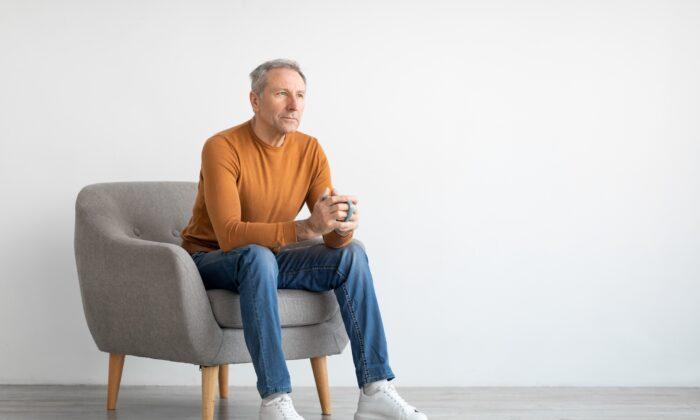There’s a “Peanuts” cartoon panel that might make you smile or—thanks to our ongoing struggle with social isolation—even cry a little. Creator Charles Schulz’s famous hero, Charlie Brown, is lying in a puffy beanbag-type seat with a thought above his head: “Absence makes the heart grow fonder, but it sure makes the rest of you lonely.”
Everyone knows how the pandemic created social absence and locked us away from loved ones, limiting our contact to a digital facsimile.
In most places, peoples are back to visiting in person. Many are going to the library, the movies, and even to one of their most important social environments: the workplace.
Why Do We Need Contact?
After enormous success in early 20th-century movies, actress Greta Garbo was famous for saying, “I want to be alone.” And she was—pretty much disappearing from Hollywood and most social venues, never marrying, having no children, and maintaining few acquaintances near her New York City sanctuary.But it’s been proven that any kind of long-term solitude—even when it’s essentially voluntary—can create dangerous health issues.
Even before the pandemic, “We were seeing a variety of societal trends, such as things like people’s social circles or social networks getting smaller,” said Julianne Holt-Lunstad, a professor of psychology and neuroscience at Utah’s Brigham Young University and a longtime guru on social isolation.
“More people are living alone,” said Holt-Lunstad. “Not that living alone necessarily means that you’re isolated, but that can certainly increase one’s risk. Fewer people are getting married, or are delaying marriage, and fewer people are having kids. And again, that doesn’t necessarily mean that someone’s isolated, but, particularly with an aging population, it might mean fewer familial types of resources to draw on for social support.”
True Dangers of Loneliness
Ellie Borden, clinical director of Mind by Design, which provides psychological assessments, treatments, and life and business coaching throughout Ontario, Canada, goes into more detail.“Social isolation is an actual measure of the amount of people we choose to surround ourselves with,” she said. “Loneliness is feelings about the quality of one’s relationships. It’s where your relationships are, and where you want them to be. If you feel that there is a big space or gap between these two points, there may be feelings of loneliness.”
Experts agree that there are normal reasons for long-term “aloneness,” which can start with relatively normal seclusion. “Someone may socially isolate because of a physical impairment following an accident or being injured,” Borden said. “Or they’re in mourning, in an abusive relationship, or even spending most of their time scrolling on social media.”
“Mental health concerns—like depression, anxiety, personality disorders, and low self-esteem and/or self-worth—can cause someone to isolate, and vice versa,” she said. Issues like these often involve a period of isolation before an individual gets back to their regular social routines. Still, the earlier an individual in distress seeks connection and support, the better.
For some, isolation can cause dangerous physical and mental decline, notes Holt-Lunstad.
“Social isolation increases our risk for premature mortality,” she said.
“It increases your risk for cardiovascular disease. It increases your risk for depression and anxiety. And it increases your risk for cognitive decline. So it has significant health risks associated with it—and yes, it is something that we need to take quite seriously.”
Maybe you don’t need help, but you’ve been having concerns about a loved one. Borden offers these points to check: “Frequently canceling plans, avoiding people and events they normally wouldn’t, seeming worried or anxious around people, losing interest in hygiene, low interest in things they previously enjoyed, not wanting to get out of bed, and lack of physical activity.”
The Technology Blessing—and Curse
Since the turn of the millennium, new digital tools have offered us a way to connect—and a way to isolate.“One of the best tools we have to help us connect to others is social media,” said Vasan. “Some social media platforms were originally created with connectivity and sharing as their intention.”
But, as Vasan reminds us, “it is important to note that we have to be really mindful about how we’re using social media. Because while some types of social media use can help us connect with others, other types can exacerbate social isolation. Some forms of communication can feel supportive and build strong bonds, while others might feel invasive and taxing.”
Holt-Lunstad also offers warnings about using social media platforms and other tools to stay connected.
“While they hold a lot of promise, we do need to be cautious and make sure they are adequately tested, because there have been some instances where studies have shown that their use actually makes things worse.
It’s Always About Coping
Some of the best lessons we can learn are through those who have faced hardship. When it comes to learning how to stay connected, Kathy Harmon-Luber has faced terrible challenges.“Over many, many years, I’ve had a lot of spinal diseases develop,” she said. She’d been very active until 2016 when a new issue created a truly dark episode that made her focus on the importance of mindset and how important social connection was to her mental well-being.
“The fourth spinal disc rupture occurred, leaving me bedridden for nearly five years,” she said. “And that was crazy, because I’m a really active, somewhat athletic person. It was a shock. I thought it would heal pretty quickly, but it took a long time. And it was inoperable.”
So, how did Harmon-Luber fight depression and other mental health issues?
“I think part of what really helped me get through being so bedridden was, ‘How can I be connected to people?’ That’s number one. Everybody needs a place of refuge and connection,” she said.
“I really made an effort to stay connected. I recognized that as a lifeline. Getting caught in a loop of bad thought, of negative thought—it’s really easy to go to that place with all the wrong questions.”
Ultimately, Harmon-Luber wrote a book, “Suffering to Thriving,” just published on May 10.
Old-Fashioned Doesn’t Mean Outdated
We’ve learned many lessons in life about connecting with others, but likely haven’t taken the time to really review and acknowledge what we’ve learned. Vasan, the chief medical officer at Real, suggests that we do.“Think back historically to times or activities that made you feel connected with others, that gave you energy, and made you feel part of a community,” she said. “Write that down. Journal on those experiences. What were the specific elements that resonated with you?”
“Then get creative about recreating those experiences. Maybe it means taking something that was in-person and turning it into a virtual experience. Maybe it means instead of traveling, doing something locally. Figure out new ways to create events and opportunities that are safe and aligned with the guidelines of what we’re able to do today.”
Vasan said that things like connecting with your community, practicing mindfulness and gratitude, reflecting, journaling, and learning best practices around sleep can help tremendously.
“These are all things you can do without any cost.”


